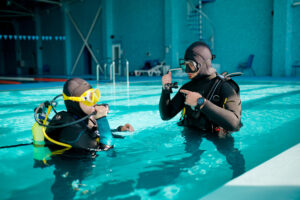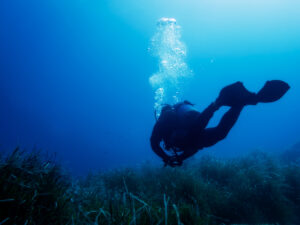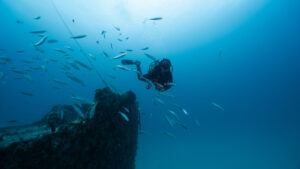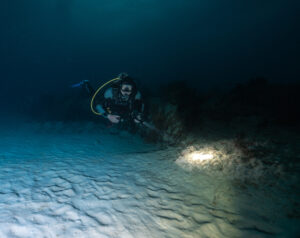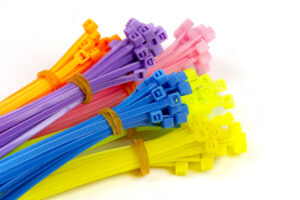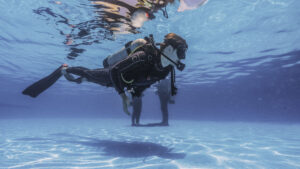What is a Weighting System?
A weighting system is an essential component of scuba diving gear that helps divers maintain proper buoyancy, stability, and trim while submerged. The system consists of a set of weights, typically made of lead, that counteract the buoyancy created by diving equipment such as wetsuits, drysuits, and buoyancy control devices (BCDs). These weights are secured to the diver using belts, pockets, or harnesses. This article will delve into the importance of weighting systems, the different types of weighting systems, how to choose the right weights and distribute them, and safety considerations.
Importance of Weighting Systems
Buoyancy is a crucial aspect of scuba diving, as it determines a diver’s ability to control their depth and position underwater. The human body, along with diving equipment, possesses a certain degree of buoyancy that can make it difficult for divers to descend and stay submerged at the desired depth. Weighting systems are designed to provide negative buoyancy, allowing divers to maintain their position, perform essential tasks, and avoid uncontrolled ascents or descents.
Types of Weighting Systems
Weight Belts
Traditional weight belts consist of a nylon or rubber belt with lead weights threaded onto it. The belt is secured around the diver’s waist, and weights can be added or removed as needed. Weight belts offer a simple, affordable, and customizable solution for divers.
Integrated Weight Systems
Modern BCDs often feature integrated weight systems, where weights are inserted into pockets on the BCD itself. This design helps distribute the weight more evenly and eliminates the need for a separate weight belt. Divers can easily add or remove weights as needed, and the integrated system allows for a more streamlined profile.
Harness Systems
These systems use a harness with strategically placed pockets or attachment points for weights. Harness systems offer greater weight distribution and stability compared to weight belts, providing a more comfortable diving experience. They are particularly beneficial for technical divers or those wearing heavy equipment.
Choosing and Distributing Weights
Determining the appropriate amount of weight and how to distribute it is crucial for efficient and safe diving. Several factors influence the choice of weights, including the type of exposure suit, the weight and buoyancy characteristics of the diving equipment, and the diver’s body composition.
During a buoyancy check at the surface, the diver should be neutrally buoyant while holding a normal breath, with weights adjusted accordingly. In general, it is recommended to use the minimum amount of weight necessary to achieve proper buoyancy.
Weight distribution is equally important, as it directly affects the diver’s trim and balance underwater. For optimal trim, weights should be distributed evenly and close to the body’s center of gravity. This allows for more natural swimming motions and reduces the risk of strain or injury.
Safety Considerations
Quick-Release Mechanisms
Divers must be able to quickly and easily release their weights in case of an emergency, such as an uncontrolled ascent. Both weight belts and integrated weight systems typically feature quick-release buckles or mechanisms to facilitate this.
Lead Handling and Environmental Impact
Lead weights can pose health risks if not handled properly. Divers should always wash their hands after touching lead and store weights in a well-ventilated area. Furthermore, using non-toxic alternatives to lead, such as coated or encapsulated weights, can minimize environmental impact.
Regular Inspection
As with all diving equipment, divers should inspect their weighting systems regularly to ensure proper function and safety. This includes checking for wear, tear, or damage to the belt, pockets, or harness, as well as ensuring the quick-release mechanisms are in good working order.
Advancements in Weighting Systems
As scuba diving technology continues to evolve, so too do the options available for weighting systems. Manufacturers are increasingly developing alternatives to traditional lead weights, such as coated, encapsulated, or non-toxic weights, which are more environmentally friendly and pose fewer health risks. Additionally, advances in materials and design have led to more comfortable and streamlined weight systems that provide better weight distribution and ease of use. Some innovations in weighting systems include:
Modular Weight Systems
These systems consist of multiple small weight units that can be easily attached, removed, or repositioned as needed. This flexibility allows divers to fine-tune their buoyancy and trim with greater precision.
Soft Weights
Soft weights are made from a flexible material filled with small lead or non-toxic pellets, providing a more comfortable alternative to traditional solid weights. They can be easily molded to fit the contours of a diver’s body, reducing pressure points and improving overall comfort.
Eco-Friendly Weights
In response to growing environmental concerns, some manufacturers have developed eco-friendly weight alternatives made from materials like recycled steel, tungsten, or bismuth. These materials have a similar density to lead but do not pose the same health and environmental risks.
As the scuba diving industry continues to grow and innovate, divers can expect to see further advancements in weighting systems that enhance safety, comfort, and environmental sustainability. By staying informed and adapting to these changes, divers can ensure they are using the most effective and responsible weighting systems available.
Key Takeaways
Weighting systems are vital for scuba diving, enabling divers to maintain control of their buoyancy and ensuring a safe, enjoyable underwater experience. By understanding the different types of weighting systems, divers can choose the most suitable option for their needs and preferences. Proper weight selection and distribution are crucial to achieving optimal buoyancy control, trim, and balance.
Additionally, divers must prioritize safety when using weighting systems, including being aware of the potential health risks and environmental impact associated with lead weights. Regular inspection and maintenance of weighting systems, along with the ability to quickly release weights in case of emergency, are essential for a safe diving experience.
New and experienced divers alike should invest time in learning and practicing buoyancy control, as it is a fundamental skill required for effective diving. Proper use of weighting systems, combined with good buoyancy control, will significantly enhance the diver’s comfort, safety, and overall enjoyment of scuba diving.



